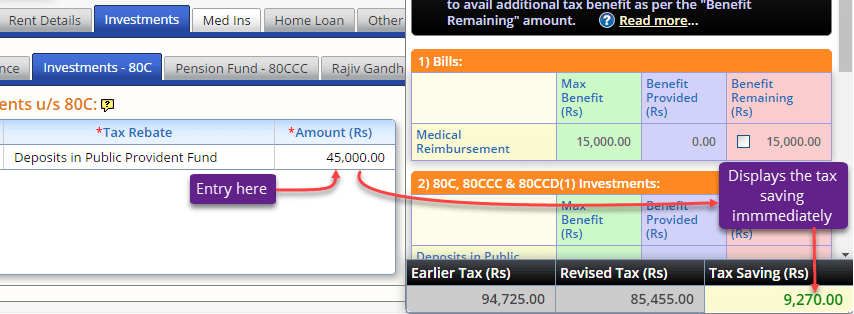UAN to be made mandatory for PF remittance
The Employee’s Provident fund Organization (commonly referred to as the PF Department) has announced that Universal Account Number (UAN) will be the unique identifier for PF remittance for each employee in the Electronic Challan cum Return (ECR) file in future. Please take a look at the PF Department circular dated 26-Oct-2016 in this regard. While the PF Department introduced the system of UAN for each member in 2014, employers have been using the PF number as the unique identifier for PF remittance since PF-ECR has not required UAN for remittance until now. Also, despite the PF Department’s repeated insistence, many employers have not been completing the formalities related to UAN – not assigning UAN to employees and not completing the KYC formalities for employees. Given that UAN is currently required only for withdrawal and transfer of PF, many employers have not been showing any urgency with regard to completing UAN formalities at the time of an employee joining the organization.
This is about to change.
The PF Department, in its circular dated 26-Oct-2016, states:
> UAN would be the key field in Electronic Challan cum Return (ECR).
> For a member joining EPF for the first time, the UAN would be obtained by the employer or member prior to filing of ECR by the employer for that member.
> The employer would furnish the member’s details on the basis of KYC documents i.e. Aadhaar, PAN, Bank Account etc. to avoid future issues about member’s name, name of father/spouse, date of birth etc.
> The UAN would be allotted upfront on the portal and would be validated in the ECR file of the employer at the time of its submission.
> Also for a member who was earlier a member of EPF prior to joining the present establishment, the linking of the existing UAN of the member should necessarily be done by the employer before filing of UAN based ECR.
> The member’s details as available in the provided UAN i.e. name of member, date of birth, father’s/ Husband’s name would be used in the ECR of the present employment.
> The generation/linking of UAN can be done through an online functionality on UAN portal.
> This would be mandatory for the employer to include the new members in the ECR.
> The employer may start remitting dues through ECR for the linked UAN thereafter.
It is clear from the circular that the PF Department is redesigning the UAN allotment process and as per the new process, employers cannot complete the remittance process unless the UAN formalities are completed. Given that in most organizations delay in PF remittance is viewed seriously by auditors, organizations will have to complete UAN formalities on time from now on.
When is this getting implemented?
While the PF Department has asked employers to complete all UAN formalities by 15-Nov-2016 in its circular, the department has not given any date for the implementation of UAN as the unique identifier for PF remittance. The changes would include a redesign of PF-ECR file format with UAN as the mandatory member identifier and changes to processes to be completed on the OTCP portal. For PF remittance pertaining to Oct 2016 payroll (15-Nov-2016 deadline), employers have used the existing format. Will the new PF-ECR come into force for PF remittance pertaining to Nov 2016 payroll? One does not know. However, we can say that the changes are likely to be implemented sooner than later by the PF Department.
A communication from the PF Department
In a communication dated 15-Nov-2016, the PF Department, while exhorting employers to complete UAN formalities, states, “In all cases where member has already been allotted UAN or possess previous member ID maximum efforts shall be taken to get it linked with the present member ID. In extreme cases where it is not possible the employee shall be treated as new member and UAN generated.” This essentially means that employers can create a new UAN for employees if they are unable to map the earlier UAN with the employee account on time (for the proposed PF remittance on the basis of UAN). This is to ensure that all employees (including those for whom UAN formalities were not completed earlier) definitely have a UAN for the purpose of PF remittance.
This obviously could lead to a situation where an employee may end up with multiple UANs.
In its FAQ document for members, the PF Department outlines the process for resolving multiple UANs.
Q.30 Two UAN allotted to me by EPFO?
In case two UAN are allotted to you, this could be because of not filing of Date of Exit by your previous employer in ECR filing and/or you have applied for transfer of service in your current establishment. In such a case, you are suggested to immediately report the matter either to your employer and through email to uanepf@epfindia.gov.in by mentioning, both – your current UAN and your previous UAN(s). After due verification, the previous UAN(s) allotted to you will be blocked and the current UAN will be kept active. Later you will be required to submit a Claim to get transfer of service and fund to the current UAN.
In case an employee has multiple UANs, they will have to raise it with the PF Department and get the earlier UANs cancelled.
Things to do for employers
If you are responsible for PF compliance in your organization, please ensure that you complete all UAN formalities (no missing UAN and KYC completed for all employees) in order to be in readiness for the new system of remitting PF on the basis of UAN instead of member ID. Also, please put in place a process in order to ensure that PF compliance is carried out in full at the time of employee onboarding.


